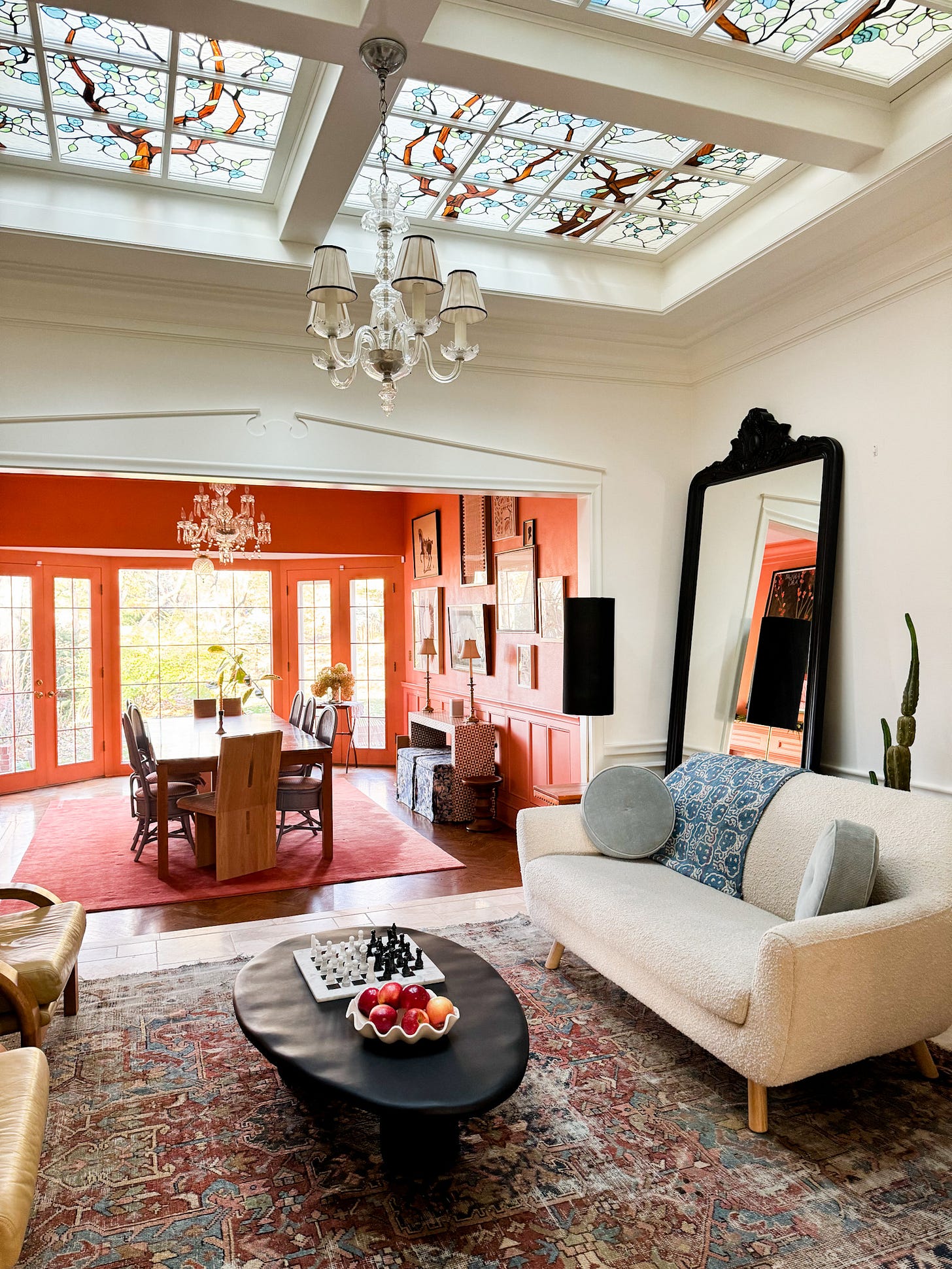Why Too Much Is Never Enough in Consumer Culture
And how I’m reframing my approach to consumption
At the root of much of our consumption is the hope that any given product will bring us a little bit closer to the person we want to become. In reality, we should be stripping away to get to know the person beneath all the stuff.
I’ve spent the past few weeks sifting through the wreckage of my now-defunct studio space, Studio 125. We shuttered abruptly in 2020 when COVID brought in-person events to a halt. While we did what we had to do to make the best of our losses and move on, my basement is littered with *literal* baggage from that era of my life. Stacks of receipts and contracts, aging photography equipment, C-stands and backdrops and knickknacks from the prop closet.
Looking at it all stirred up a soup of emotions inside me. A mix of nostalgia, regret, and lessons, all benefiting from the clarity of hindsight. And yet the sheer volume of it all was astonishing. It is one thing to hold the emotional load of whatever has come to an end, and another to meet evidence of it physically as I confronted the stacks of unusable and unneeded stuff—from press kits to prototypes to prop closet supplies. Just… so much… stuff. It’s stuff that had ties to hopes and projects and things I had planned to build. As I’ve found headspace to process all that has happened through the last decade of building multiple businesses, I’ve started thinking about my own relationship with consumption and how it relates to my actual job as it exists today: talking about—and creating—a relationship between our spaces and ourselves.
Our Complicated Relationship With Things
I was chatting with an acquaintance last weekend about the act of getting dressed. What she puts on, how she combines the same items day after day in different ways—it’s a daily creative practice. She recently had a number of vintage pieces stolen from her home, and the loss was so much more than the violation of her private space and the loss of possession. These pieces were an extension of her identity. I can relate— the things that mean something to us add value to our lives. We feel a loss when they expire, become worn out, or become lost. They hit differently than the impromptu sale purchase while sitting the school pick-up line.
At the root of much of our consumption is the hope that any given product will bring us a little bit closer to the person we want to become. In reality, we should be stripping away to get to know the person beneath all the stuff. When we do this, what matters to us becomes glaringly obvious. It’s that push-pull of discovery and delight—the discovery is little more than a cheap thrill if what you’re searching for isn’t going to be put to good use.
Consumption is undoubtedly part of how one builds a deeper connection to whatever daily form of creative expression they dabble in. But it is only one way to get there, and too often— especially when we want the end result immediately—we throw our money at a thing that promises the result instead of placing one piece in the long puzzle of creative expression. Because we want that perfectly curated wardrobe NOW, we resort to listening to influencers or experts about how to build it with a flurry of credit card activity. Or, because we want our homes to feel complete, we rush through purchasing furniture and decor only to feel like a little bit of our soul is missing in the end result. The missing piece here is patience. Patience and time.
Our things hold meaning. And when we combine two seemingly simple yet meaningful things through our own unique creative expression, something special happens. This micro-moment of creativity invites others to see a piece of us words alone cannot express. So many of us miss the opportunity to let this happen because we’re busy emulating someone else. The key is finding the right things that bring to light that unique expression. And those careful choices come from knowing yourself.
So when I’ve found myself disenfranchised with consumer culture, I’ve asked how I can become more empowered in my personal spending choices; how I can spend in a way that feels authentic to me without worrying how it looks to others. Am I consuming to make my life better? And what does better mean to me?
In today’s newsletter, I’m writing about how I’ve reframed my approach to personal consumption to gain a better relationship between myself and my stuff.



